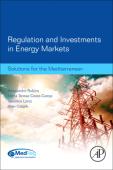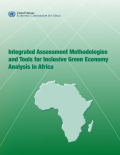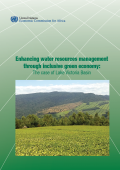Africa stands at the threshold of a tremendous opportunity: its economies are seeking to shift to higher productivity sectors which can boost prosperity and drive developmental goals. At the same time, the right kind of economic transformation can also ensure that Africa’s growth is sustainable and resilient in the face of the increasing impacts of climate change.
This report offers key insights for policy makers seeking to deliver better growth and a better climate in African countries. It aims to help decision-makers take stock of the region’s recent experiences and draw lessons for the future. In particular, it seeks to crystallise ideas on how to harness the forces of economic, social and environmental change to accelerate inclusive and sustainable development across the region.
For Africa to achieve this better growth, the report identifies five action areas for governments to consider as they formulate development strategies and action plans for the future. These are:

While initial steps have been taken to diversify the energy mix in North Africa, large-scale deployment of renewable energy technologies and a transformation of the energy sector are lagging behind. This chapter argues that a systemic approach is essential for scaling up renewables, as piecemeal measures are not likely to capture the full range of expected outcomes. Systematic learning should be at the core of policy-making with a view to capturing long-term benefits, as well as an effort to coordinate across development agendas and foster alliances between stakeholders with diverse interests in the energy sector and beyond. Ultimately, a new narrative that discredits the “old” energy regime and sheds light on the cobenefits of pursuing an integrated approach to green growth and energy sector transformation is needed.

High upfront costs and investment risks constitute critical barriers for investments in low-carbon infrastructure technologies in the Middle East and North Africa. This article uses a case study of Morocco's solar strategy for the electricity sector in order to explore how domestic versus regional/multilateral governance structures impact upon the downside risk of clean energy investments and translate into lower financing costs. The authors firstly process-trace the differential effects of governance on policy and financial de-risking, intended as risk reduction and risk transfer. Then they quantify the impact of policy and financial de-risking on the financing costs of the Ouarzazate CSP Noor 1 project.

The inclusive green economy has gained considerable attention in past years as an action-oriented approach and one of the tools for realizing sustainable development. The main contribution of this approach has been identified as integrating economic, social and environmental dimensions of development policies in a coherent, cross-sectoral framework of analysis. As governments begin to develop and implement inclusive green-economy strategies, more attention is being given to research into the use of methodologies and tools to identify social, economic and environmental trends, and the evaluation of the likely outcomes of implementing inclusive green economy policy.

Lake Victoria in East Africa, the world’s second largest lake, is endowed with abundant water and other natural resources. The lake is transboundary and of significance to its basin countries – which are also East African Community (EAC) partner States (Burundi, Kenya, Rwanda, Uganda and United Republic of Tanzania) – and basin communities because of its role in supporting valuable ecosystem services, livelihood systems and economic activities. The basin’s natural resource endowments include water resources (the lake’s estimated volume is 2,700 km3); rivers, streams and wetlands; abundant and fertile land; natural forest resources; minerals; and wildlife, including a high annual fish yield estimated at more than $550 million. It also hosts the crested crane and the globally threatened sitatunga – a swamp dwelling antelope.
